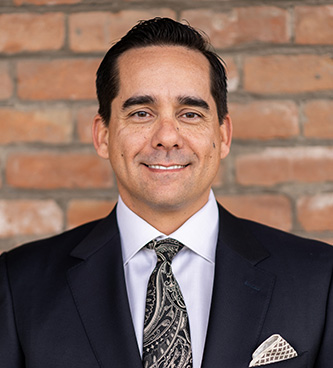As you may know, incidents involving air transportation have been prominent in the news in recent weeks. In February, a tour of the Grand Canyon ended in a deadly helicopter crash. On April 9, a small plane went down shortly after taking off from Scottsdale Airport, killing all six people on board. And of course, this week, a Southwest Airlines flight saw the first fatality on a US commercial airline since 2009 after one of its engines exploded, sending shrapnel through passenger windows and forcing the plane to make an emergency landing.
For those with a fear of flying, these stories do little to ease that anxiety. With that said, statistically speaking, air travel is by far the safest mode of transportation. In fact, in 2017, commercial airlines flew over 4 billion passengers on 38 million flights without a single fatality. Nonetheless, as recent news tells us, nothing can be completely safe, and in-flight injuries ranging from bumps and bruises to death do occasionally occur. As Arizona Injury Lawyers, we, at Torgenson Law, are here to remind you that even at 36,000 feet above the ground, you have personal injury rights.
Airlines are Held to a Higher Standard of Care
Because airlines transport passengers to a destination for a fee, they are known as “common carriers.” As a common carrier, an airline must exercise utmost care for their passengers from the boarding to de-boarding process. To satisfy this high standard, airlines must safely operate, maintain, and inspect all aspects of the flight to ensure that its passengers arrive at their destination free from harm. Injuries caused by falling luggage or serving cart accidents may subject the airline to liability. An airline may even be responsible when its passengers fall due to turbulence if passengers were not properly warned or were permitted to move about the cabin despite the airline’s knowledge of the impending rough ride.
In addition, airline personnel are responsible for ensuring that the plane itself is safe for travel. They must safeguard against noticeable defects in the engines, landing gear, and exterior of the aircraft. If the plane is permitted to takeoff despite the airlines knowledge of hazardous flaws that pose risk of injury to its passengers, it will be held responsible for any injuries that result.
Who is Responsible for Defective Equipment?
Like any other form of motorized transportation, airplanes consist of various parts and equipment that must all work properly for the aircraft to fly and keep its passengers safe. Occasionally, one of these parts malfunctions. Perhaps, an overhead bin’s latch is broken or a landing gear fails. In any such instance, someone may be injured and the airline may not be the only party at-fault. Of the hundreds of thousands of parts on an airplane, each may be designed and built by different manufacturers. They may have been installed or repaired by a different maintenance crew. These separate entities may also be liable if their negligence created a dangerous situation that caused injuries on an aircraft.
At Torgenson Law, we want to remind you that whether you going for a morning walk or flying across the country, your rights to be free from harm and injury do not cease. For any personal injury, including those that occur on airplanes, it can be difficult to determine who is at fault. So, if you or a loved one suffers personal injuries, call Torgenson Law at (602) 726-0747, and we will work tirelessly to represent your personal injury needs.

John Torgenson is a highly experienced personal injury lawyer with over 20 years of practice in Arizona. He earned his Bachelor’s degree from the University of Utah and his Juris Doctor from Notre Dame. John has a proven track record of securing substantial verdicts and settlements, including an $8.25 million recovery for a gunshot injury victim. His expertise has earned him AVVO ratings and recognition as a Super Lawyer.
John is also a sought-after lecturer on personal injury law, sharing his extensive knowledge with peers and aspiring attorneys. Beyond his legal practice, John is an avid golfer and actively supports organizations like the Military Assistance Mission, Arizona School for the Arts, Page Balloon Regatta, University of Arizona Foundation, Junior Achievement of Arizona, and the Tim Huff Pro Bono Golf Classic.
Passionate about advocating for injury victims, John dedicates his career to battling insurance companies and corporate interests, ensuring that the rights of those who are hurt are vigorously defended.
